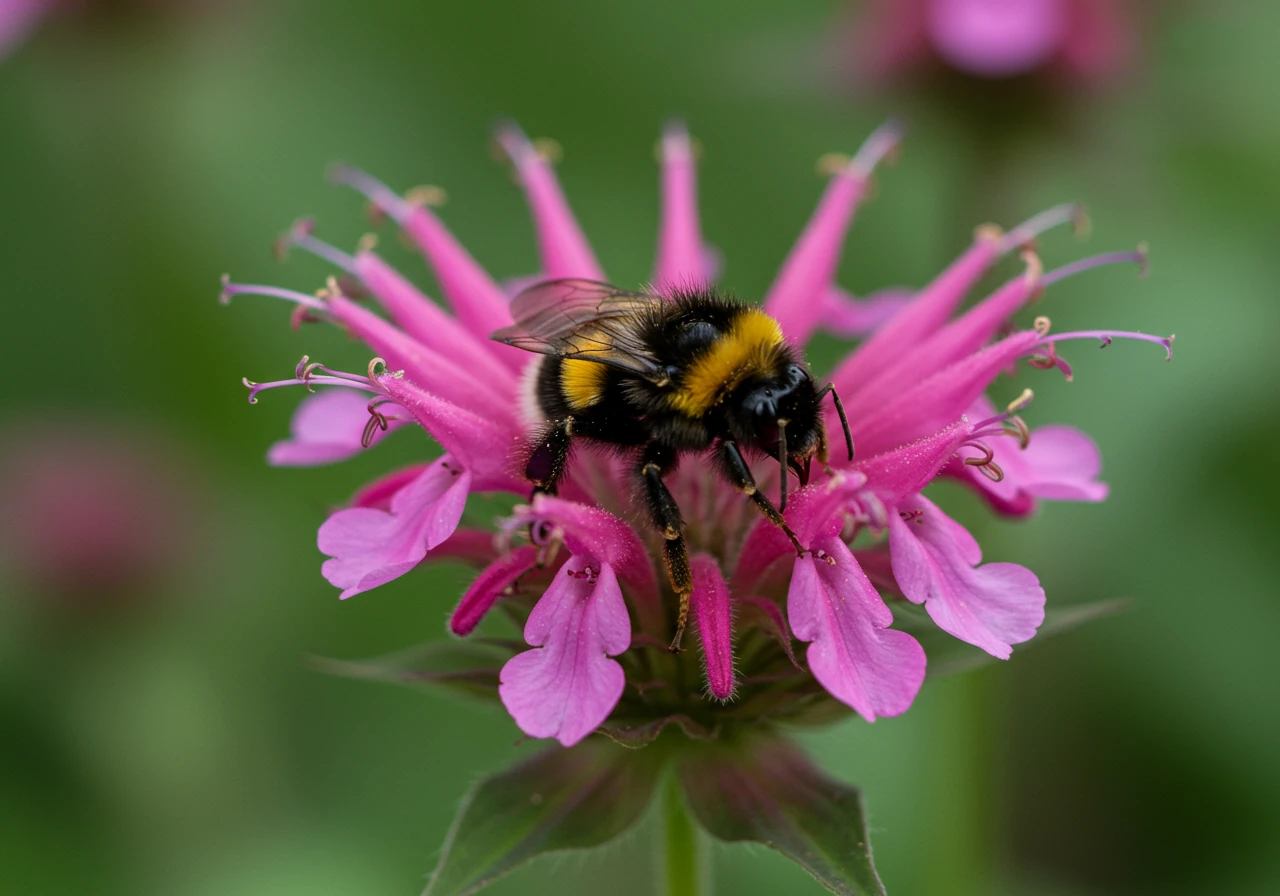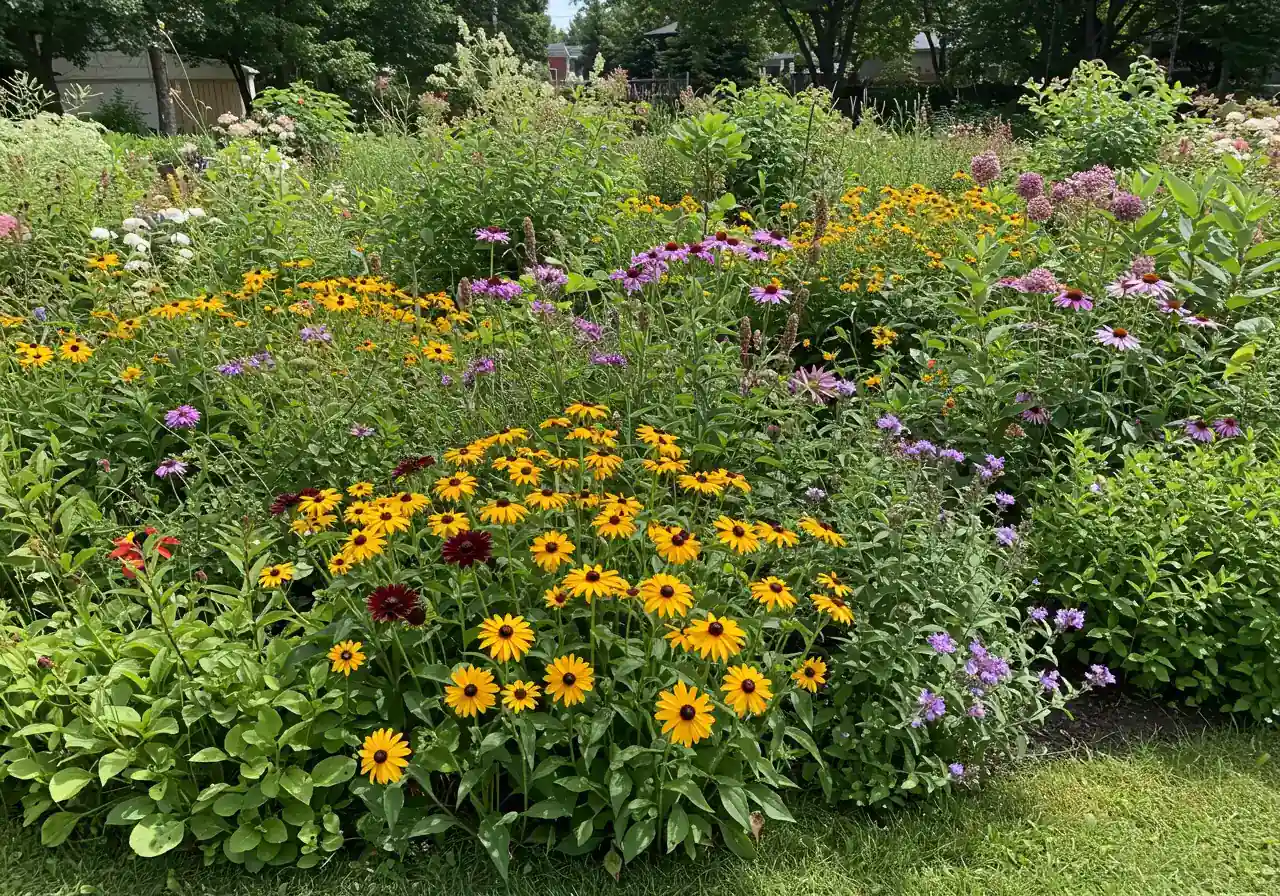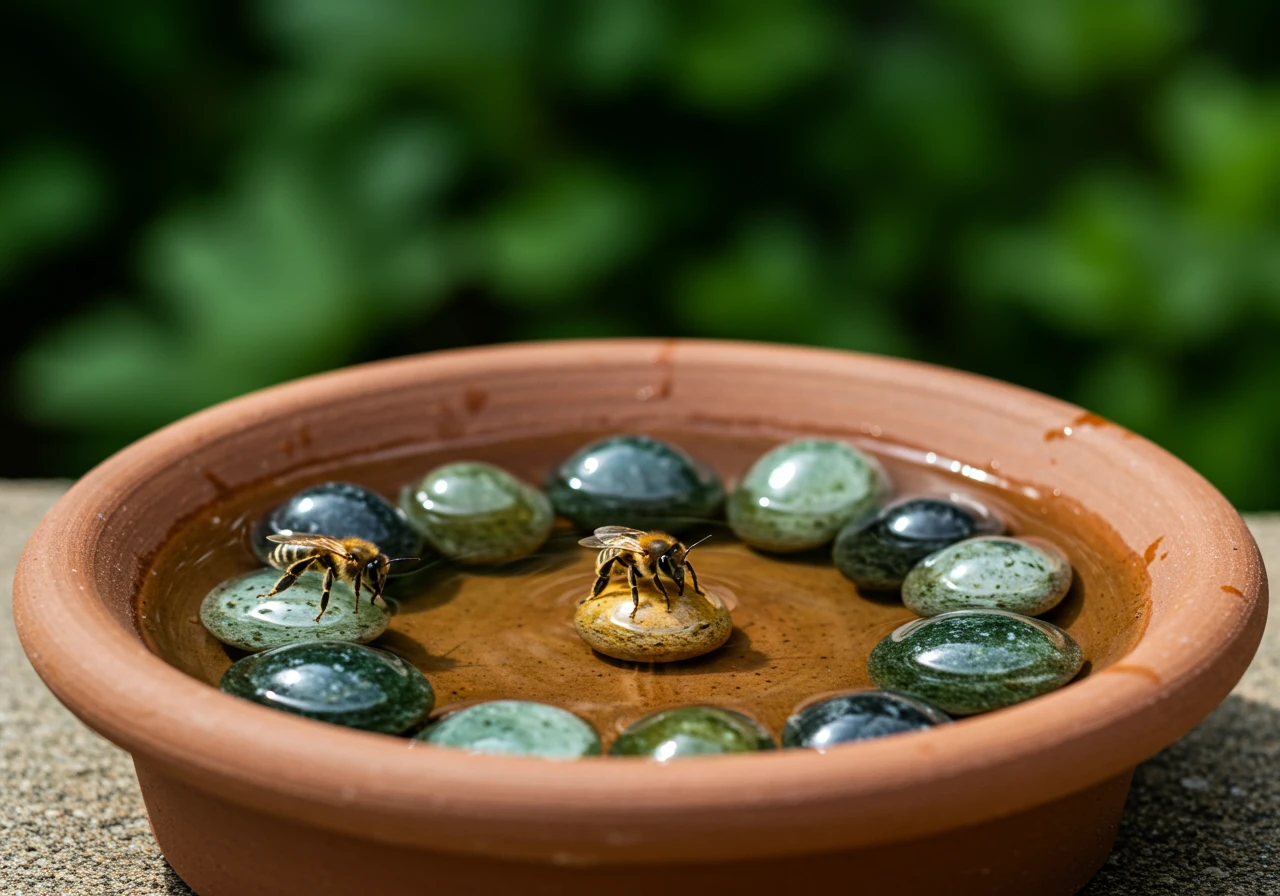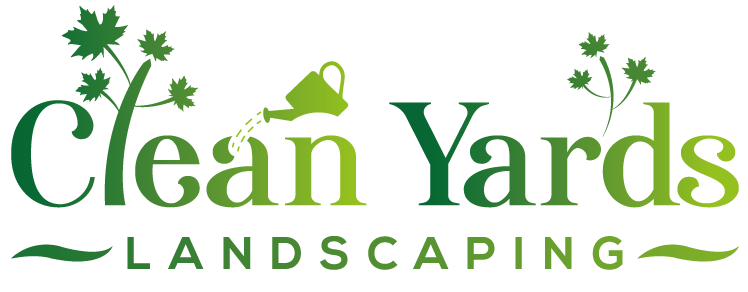Manotick Pollinator Path: Link Gardens, Help Bees Now
Ready to create your own pollinator haven but need some help? Get a personalized quote for your Manotick garden project!
Request a Quote Today!Quick Summary: Help Pollinators in Manotick
- Pollinators (bees, butterflies, etc.) are vital but declining due to habitat loss and lack of food.
- The "Manotick Pollinator Path" concept involves linking gardens with pollinator-friendly plants to create connected habitats.
- Prioritize planting native species suited to the Ottawa climate for maximum benefit.
- Provide food sources across seasons (spring, summer, fall) and offer water and shelter (stems, leaves).
- Reduce pesticide use and adopt water-wise gardening practices.
- Even small spaces like balconies can contribute significantly.
Introduction: Why Manotick Needs a Buzzworthy Makeover (And How You Can Help!)
Okay, Manotick! Let's chat gardens. Our village is undeniably lovely, but could our green spaces pack a bit more *punch*... or should we say, *buzz*? We're aiming for more than just a pretty face in the flower bed; we're talking about rolling out the welcome mat for our essential little neighbours: the pollinators! Bees, butterflies, hummingbirds – these guys are crucial, but they're struggling. Their habitats are shrinking, making it harder for them to find food and shelter across our landscapes.
The fantastic news? We can totally help, one garden, balcony, or window box at a time! This article is your cheerful, down-to-earth guide to the simple magic of creating pollinator pathways. Think of it as building beautiful, connected 'nature highways' right through our neighbourhoods using smart landscaping and gardening choices. We'll share easy ideas, focusing on planting colourful, nectar-rich native species and other pollinator-friendly flowers. Starting here in Manotick, let's inspire folks across Ottawa – from nearby Greely and Nepean neighbours to the wider region – to join in. Ready to make our community *truly* buzzworthy? Let's dig in!
Who Are Our Pollinator Pals and Why the Long Faces (or Antennae)?
Okay, let's meet the crew! When we talk about "pollinator pals," who exactly are we buzzing about?

Question: So, who are these important pollinators anyway?
Answer: Think tiny superheroes! The most famous are bees – fuzzy bumblebees, industrious honey bees, and tons of native solitary bees you might not even notice. But the team is much bigger! Butterflies add a splash of colour, moths work the night shift, hummingbirds are the speedy nectar-sippers, and even some flies and beetles get in on the pollination action. Basically, if it moves pollen from one flower to another while looking for a meal (nectar or pollen), it’s a pollinator! They're essential workers in our gardening and agricultural worlds.
Question: Why are they so important? What's the big deal?
Answer: It's a huge deal! About 75% of the world's flowering plants and roughly 35% of global food crops depend on these little critters. No pollinators? Say goodbye to apples, blueberries, pumpkins, coffee, chocolate... the list is long and frankly, depressing. They help plants reproduce by moving pollen, which leads to the fruits, seeds, and nuts we (and other wildlife) rely on. They are fundamental to healthy ecosystems and beautiful landscapes right here in Manotick and across Ottawa.
Question: Okay, got it. But why the "long faces" (or antennae)? Are they really struggling?
Answer: Sadly, yes. Many pollinator populations are facing tough times, and it's largely due to us humans.
- Habitat Loss: As areas like Nepean and Barrhaven expand, natural meadows and diverse habitats shrink. Pollinators lose the specific plants they need for food and the safe spots they need for nesting or overwintering. Simply tidying up too much can be an issue; for insights on balancing cleanup with wildlife needs, check out our Manotick Fall Cleanup & Winter Prep Guide. A perfectly manicured lawn doesn't offer much for them.
- Food Scarcity: Imagine only having one fast-food joint open for miles – that's what it's like for pollinators when diverse, native flowering plants disappear, replaced by large lawns or non-native ornamentals that offer little nectar or pollen. Thoughtful garden design is key; learn how we approach Manotick Garden Design: Creating Your Dream Backyard with pollinators in mind.
- Pesticide Use: Chemicals used in landscaping and farming can harm or kill pollinators directly, or weaken their ability to navigate and reproduce.
- Climate Change: Ottawa's shifting weather patterns can mess with flower bloom times, potentially creating gaps when pollinators emerge but their food sources aren't ready. Droughts also impact nectar production, making water conservation vital. Ensuring plants are properly hydrated helps; see tips on Manotick Irrigation Checks to Save Water in Summer.
Even the way we prepare our yards for winter matters. Leaving some stems and leaves provides crucial overwintering habitat for many insects. For more on getting your yard ready while being mindful of nature, see our advice on Manotick Fall Cleanup and Winter Lawn Prep.
Creating pollinator-friendly spaces is a fantastic way to counter these challenges, adding beauty and ecological value to your property. If you need help transforming your yard, explore our Landscaping & Gardening Services.
The Manotick Pollinator Path: Linking Gardens, Building Buzz
Okay, so what exactly *is* this "Manotick Pollinator Path"? Don't worry, we're not asking you to pour concrete or reroute traffic! Think of it more like a beautiful, living network – a series of connected pit stops for our busy bee and butterfly friends right here in our community and potentially linking outwards. The idea is wonderfully simple: if one garden offers a snack bar (hello, nectar-rich flowers!), and the next-door neighbour’s yard has another, and the folks down the street add *their* patch, we start building crucial stepping stones. Link enough of these pollinator-friendly gardening havens together, and voilà! You've helped create a 'path' or a 'highway' that helps these essential creatures travel safely, find food, and thrive across Manotick.

Imagine a tiny bee needing to travel from one end of the village to the other, maybe even exploring options towards nearby communities like Kars or Richmond! If all it encounters are vast stretches of plain lawn or purely ornamental (but non-native) plants, it’s like asking someone to cross a food desert with no convenience stores. It’s tough! But if we, as a community, intentionally create these little oases filled with native plants, maybe a shallow dish of water with some pebbles, and spots for shelter, we bridge the gaps in the landscape. Even a small container garden bursting with blooms on a balcony is a valuable contribution!
The real magic happens when neighbours coordinate, consciously connecting their efforts to create a larger, more resilient habitat corridor. Getting your patch ready might involve clearing out some old plantings or weeds, which is where a professional Manotick Yard Cleanup Service can certainly lend a hand to prep the space. Once cleared, ensuring good Soil Preparation for Vibrant Gardens is absolutely key to giving your new pollinator-attracting plants the best possible start. Adding some nice finishing touches like Professional Mulching and Edging can help define these special pollinator zones, retain moisture for the plants, and just make everything look tidy and intentional.
It’s truly a community effort, building buzz (literally!) one beautiful yard at a time. Whether you just need a little advice or want help designing and installing a full pollinator paradise, exploring professional Landscaping & Gardening Services can make joining the path fun and easy. Let's inspire the whole Ottawa region, showing how even developed areas can support pollinators, perhaps with broader initiatives supported by a City-Wide Yard Cleanup Service to help prepare public or private spaces across many different neighbourhoods. Let’s get planting and connect Manotick!
Inspired to add pollinator-friendly features? We can help with everything from garden design to planting and maintenance.
Explore Our Gardening ServicesYour Garden's Mission (Should You Choose to Accept It): Creating an Ottawa Pollinator Paradise
Okay, agent gardener, let's get down to brass tacks. Your mission, should you choose to accept it, is to transform your patch of Ottawa – be it a sprawling backyard in Metcalfe or a tiny balcony downtown – into a thriving haven for our essential pollinator pals. This message *won't* self-destruct, but your local ecosystem *will* thank you!

Mission HQ: Why Native Plants are Your Best Gadgets
Forget fancy, high-tech gizmos. Your secret weapon in this mission is native plants. These are the species that grew wild in the Ottawa region long before we started building houses and patios. Why are they the VIPs (Very Important Plants)?
- They Speak the Local Language: Native pollinators and native plants evolved together. Think of it like having the *exact* right key for a lock. Local bees, butterflies, and birds recognize these plants and are perfectly adapted to feed on their nectar and pollen.
- Built for Ottawa: They're naturally suited to our specific climate, rainfall, and even challenging soil types, whether you've got heavy clay like some areas or sandier soil often found nearer the rivers. This means less fuss, less water, and more success for you! Selecting the right materials, including plants, is key, learn more about Material Selection.
- Host with the Most: Many pollinators, especially butterflies, need specific native "host plants" for their caterpillars to munch on (like Monarchs needing Milkweed). No host plant = no new generation. Consider a full Garden Install to incorporate these vital species.
Your Pollinator Cafeteria: Serving Food All Season Long
Imagine showing up to your favourite restaurant only to find it closed most of the year. Not cool! Pollinators need food from early spring right through to late fall. Your goal is to create a continuous buffet. Here’s a simple blueprint:
- Early Spring: When pollinators first emerge, hungry after winter. Think *Wild Columbine*, *Wild Geranium*, or Pussy Willows (yes, the trees!).
- Mid-Summer: Peak season! Load up on *Common Milkweed* (essential for Monarchs!), *Bee Balm* (Monarda fistulosa), *Black-Eyed Susans*, and *Purple Coneflower*.
- Late Summer/Fall: Crucial fuel for migrating species and those preparing for winter. Plant *New England Aster*, *Canada Goldenrod* (don't worry, it's not the ragweed causing allergies!), and *Sneezeweed* (Helenium autumnale).
Planning this sequence ensures there’s always something *buzzing* in your garden. Ongoing Garden Maintenance helps keep these plants healthy and blooming.
Operation Oasis: Providing Water and Shelter
Food is vital, but our little agents also need water and a safe place to rest and raise their young.
- Water Station: A shallow dish filled with pebbles or marbles and water is perfect. The stones give pollinators a safe place to land so they don't drown while taking a drink. Keep it fresh!
- Safe Houses: Don't be *too* tidy! Many native bees nest in hollow stems or bare patches of ground.
- Leave some plant stalks standing over winter.
- Allow a small pile of leaves in a corner.
- Leave some patches of bare earth undisturbed (avoid thick layers of wood mulch everywhere).
- Soil Considerations: Knowing your soil helps choose the right plants. Heavy clay? Amend with compost to improve drainage. Sandy soil? Add organic matter to help retain moisture. Choose plants labelled tolerant of your specific conditions. Good Soil Preparation makes a huge difference.
Your Step-by-Step Field Guide to Paradise:
- Reconnaissance: Observe your site. How much sun does it get? What’s the soil like?
- Mission Planning: Choose a variety of native plants ensuring blooms across all three seasons (spring, summer, fall). Variety in flower shapes and colours attracts different pollinators.
- Site Prep: Clear the area of unwanted weeds or grass. This might be the perfect time for an Ottawa garden clean up service to give you a clean slate. For larger jobs or specific community needs, like prepping a space in Metcalfe, a dedicated Metcalfe property cleanup service or even a Metcalfe garden clean up service could be your allies. Sometimes a major overhaul is needed across different areas, which is where a broad city-wide yard cleanup service might come into play for community projects like those needing Property Clean Up.
- Planting: Arrange your plants, considering their mature size. Water them well.
- Install Amenities: Add your water dish and designate shelter spots.
- Low-Impact Maintenance: Water new plants until established. Avoid pesticides like the plague – they harm your target recruits! Embrace a little wildness. Consider professional City Garden Maintenance Service if needed.
Creating a pollinator paradise is a rewarding mission. It adds beauty, supports critical wildlife, and contributes to a healthier Ottawa ecosystem. It’s a core part of why we do what we do – you can learn more about us and our commitment to beautiful, functional, and eco-friendly yards. Now, go forth and make Ottawa buzz! Mission accepted?
Spotlight: Bee Balm (Monarda fistulosa)
A native superstar! Its unique tubular flowers are perfect for long-tongued bees (like bumblebees) and hummingbirds. Comes in shades of pink and purple. Prefers full sun to part shade and tolerates various soil types. Spreads readily, so give it some space or divide occasionally. Essential for a mid-summer nectar boost.
Spotlight: Purple Coneflower (Echinacea purpurea)
Instantly recognizable and adored by bees and butterflies! These sturdy perennials boast large, daisy-like flowers with prominent cones. They thrive in full sun and well-drained soil. Leave seed heads standing over winter for birds! Many cultivars exist, but native species often offer the most pollinator value.
Spotlight: Common Milkweed (Asclepias syriaca)
Absolutely critical for Monarch butterflies – it's the ONLY host plant for their caterpillars. Large globes of fragrant pink flowers also attract a huge variety of bees and other pollinators. Needs full sun and can handle average to dry soils. It's vigorous; plant it where it has room to roam or in a dedicated patch.
Eco-Gardening Smarts: Practices That Protect Our Pollinator Friends
Alright, let's talk about gardening with a conscience – not the kind that nags you about weeding (though, maybe a little!), but the kind that helps our buzzing buddies thrive! Eco-gardening isn't about letting your Nepean backyard run totally wild like a jungle movie set; it's about making smart, gentle choices in our landscaping that work *with* nature, not against it. These practices aren't just good for bees and butterflies; they're fantastic for our local Ottawa environment too, helping protect precious resources like the Rideau and Ottawa River watersheds.

Here are some simple, eco-smart moves you can make:
- Go Easy on the Chemicals: This is a big one. Pesticides and herbicides can be really harmful, not just to the pests you're targeting, but also to beneficial insects like pollinators, ladybugs, and other garden helpers. Plus, runoff carrying these chemicals can find its way into our rivers. Instead, try Integrated Pest Management (IPM) – think hand-pulling weeds (good exercise!), using barriers, encouraging natural predators, or choosing disease-resistant plant varieties. Being mindful of what we add to our yards is crucial; it's about responsible stewardship, a principle that guides professional services too – you can review standard service details in our terms and conditions.
- Water Wisely: Pollinators need healthy plants bursting with nectar, and healthy plants need water! But let's be smart about it. Water deeply but less frequently to encourage strong roots. Consider installing a rain barrel to capture free water! Choosing native, drought-tolerant plants reduces water needs significantly compared to thirsty traditional lawns. Healthy soil with good organic matter also holds moisture better. This approach differs from conventional, water-intensive lawn care, saving water and protecting our local water tables.
- Embrace a Little 'Mess': Okay, maybe "selective untidiness" sounds better? Many pollinators, including native bees and butterfly larvae, need shelter over winter. Leaving some dead plant stems standing until spring provides crucial nesting spots. A small pile of leaves in a corner offers refuge too. Resist the urge to clear *everything* away aggressively in the fall. A targeted cleanup, perhaps focusing on specific areas while leaving others natural, strikes a good balance. Even in quieter communities, thoughtful maintenance matters; dedicated help like a Marionville garden clean up service can assist in prepping areas while respecting these habitat needs. Check out some examples of yards moving towards ecological health and beauty in our transformations gallery.
- Rethink Your Lawn: Large expanses of perfect grass offer very little for pollinators. Consider reducing your lawn size and replacing it with diverse flower beds filled with native species. Mowing less often, or mowing higher, allows low-growing flowers like clover (a pollinator favourite!) to bloom. Shifting even part of your yard towards a more diverse, eco-friendly design creates a much more vibrant and beneficial space.
Making these small adjustments in our gardening habits can create a huge positive impact for pollinators right here in Ottawa and its surrounding neighbourhoods. It’s about creating healthier ecosystems, one beautiful, buzzing yard at a time!
Illustrative: Pollinator Visits by Flower Type (Example Garden)
*Illustrative data representing relative attractiveness observed in a sample period.
Spread the Buzz: Resources & Getting Your Neighbours Involved
Alright, pollinator champion, you've got the basics down for your own patch of paradise! But you know what's even better than one pollinator-friendly garden? A whole *neighbourhood* buzzing with life! Getting your neighbours on board multiplies the impact, creating those vital pathways we talked about. Plus, it’s just more fun when you can swap stories (and maybe some extra Bee Balm seedlings) over the fence. Ready to spread the buzz beyond your own gardening efforts?
Here’s how to get the community humming:
- Start the Conversation: Seriously, just chat! Next time you see your neighbour outside, mention your pollinator project. Maybe admire a plant they have and gently suggest a native alternative that attracts more butterflies. You could even offer them some seeds or extra plants from your garden. Sharing your experiences, both successes and learning moments, is super valuable – kind of like how sharing feedback on landscaping estimates helps improve future plans for everyone involved.
- Point Them to the Pros (and Enthusiasts!): You don't have to be the sole expert! Point neighbours towards fantastic local resources.
- Master Gardeners of Ottawa-Carleton: These folks offer free gardening advice online and at events. (mgottawa.ca)
- Local Horticultural Societies: Groups often host talks, plant sales (great for finding natives!), and garden tours. Check for societies active near Manotick or even further afield towards Russell or Winchester.
- Fletcher Wildlife Garden: Located near the Experimental Farm, it’s a living showcase of native plant gardening for wildlife. Perfect for inspiration! (ofnc.ca/programs/fletcher-wildlife-garden)
- Native Plant Nurseries: Encourage neighbours to seek out local growers specializing in plants native to the Ottawa Valley.
- Clean Yards GMB: Check out our Google My Business profile for project photos and updates!
- Team Up for Bigger Impact: Got a lonely looking boulevard or a drab corner in a shared community space? Talk about pooling resources for a neighbourhood pollinator patch! Organizing a planting day can be a fantastic community builder. If the space needs significant prep work, like clearing weeds or old debris, coordinating help might be needed. For larger jobs, a professional touch like a city garden clean up service could handle the heavy lifting, setting the stage for planting. This collaborative approach works everywhere, even coordinating efforts in nearby communities like Marionville is possible with dedicated help such as a Marionville property cleanup service tackling area-specific needs like a Marionville yard cleanup service. When undertaking community projects or hiring help, ensuring everyone understands the plan and expectations is key, similar to how clear terms and conditions outline service agreements.
Don’t be shy! Share your enthusiasm. A friendly chat, a shared resource, or a community project can spark amazing action. Let's get Ottawa, from Barrhaven to Embrun and everywhere in between, buzzing together! A huge thank you for joining the buzz and helping spread the word!
Timeline: Establishing Your Pollinator Patch
Phase 1: Planning (Winter/Early Spring)
Research native plants suitable for your sun/soil conditions. Sketch a basic layout. Order seeds or plan nursery visits.
Phase 2: Site Prep (Mid-Spring)
Clear the area of grass/weeds. Amend soil with compost if needed. Consider using a yard cleanup service for heavy lifting.
Phase 3: Planting (Late Spring/Early Summer)
Install plants according to your plan. Water thoroughly. Add mulch around plants (leaving some bare ground spots).
Phase 4: Watering & Weeding (Summer)
Keep new plants watered, especially during dry spells. Remove weeds promptly before they get established. Install your bee bath!
Phase 5: Fall Prep & Observation (Fall)
Observe which plants thrived. Leave stems and seed heads standing for winter interest and habitat. Plan any adjustments for next year.
Phase 6: Enjoy the Buzz! (Ongoing)
Watch pollinators visit! Continue low-impact maintenance. Divide mature plants or add new species over time.
Highlight Box: Quick Wins for Busy Bee Supporters
Hey Ottawa, feeling the time crunch but still want to be a superhero for our buzzing buddies? We get it! Life in places like Barrhaven or Nepean keeps us hopping. But helping pollinators doesn't need a total garden overhaul. Here are a few super-speedy ways to make your patch a little more pollinator-friendly – think of it as low-effort, high-impact gardening!
- Plant One Power Flower: Just add *one* pollinator magnet like a Coneflower, Bee Balm, or Salvia to a sunny pot or garden bed. It’s a simple boost to your existing landscaping that provides a vital snack stop.
- Set Up a Bee Pub: Place a shallow dish filled with pebbles or marbles and fresh water in your garden. Pollinators need water too, and the pebbles give them a safe place to land and sip. Cheers!
- Embrace Lazy Lawn Moments: Let tiny flowers like clover bloom in your lawn for a bit before you mow. It’s a free bee buffet! Your small patch contributes to the bigger picture across the city, complementing larger efforts handled by services like a city property cleanup service on bigger tracts of land.
- Skip a Spray Day: Try skipping just *one* round of pesticide use. Every little bit helps protect beneficial insects. If you're clearing weeds to make space for bee-friendly plants and need a hand, a professional Ottawa yard cleanup service can help you prep the area quickly and responsibly. Your individual action, scaled up across neighbourhoods, supports the work done by area-specific teams like a Metcalfe yard cleanup service or city property cleanup service.
- Offer Tiny Homes: In the fall, leave just a small clump of old flower stems or a little pile of leaves in a quiet corner. Many beneficial insects overwinter there! This simple act supports local biodiversity, just like larger initiatives requiring a city garden clean up service to prepare community spaces for pollinator habitats.
See? Easy peasy, lemon squeezy (bees love lemon balm, by the way!). Every tiny action adds up to create a more welcoming Ottawa for pollinators. Need more ideas or help with the slightly less quick wins? Don't hesitate to contact us!
FAQ: Your Ottawa Pollinator Garden Questions Answered
Got questions about starting your own slice of pollinator paradise here in Ottawa? You're not alone! Here are answers to some common queries to help you get buzzing.
Spring or fall are generally best! Spring planting (after the last frost, usually late May) gives plants the whole season to get established. Fall planting (late August to September) works well too, letting roots settle before winter. Just avoid planting in the scorching heat of mid-summer. Need help clearing space first? Consider an Ottawa yard cleanup service to get your beds ready for planting.
Absolutely! You don't need a sprawling estate. Even a few pots on a balcony make a difference. Choose compact native plants like Wild Strawberry or Lance-leaved Coreopsis. Add herbs like thyme or oregano – pollinators love them too! It's about creating mini-oases. Every little bit of smart gardening adds up to help our buzzing friends find their next meal.
You bet! While many pollinator favourites love sun, plenty thrive in shade. Think Wild Ginger, Foamflower, Canada Anemone, or Zigzag Goldenrod. Woodland species are your friends here. Check plant tags for light requirements. Even shade gardens can become valuable parts of the local pollinator landscape supporting biodiversity across Ottawa.
Great question! Hand-pulling is effective, especially when weeds are small (get 'em before they seed!). Applying a thick layer of mulch (like shredded bark) suppresses weeds and holds moisture. Planting densely also helps crowd out unwanted guests. For bigger weed invasions before you plant, an Ottawa property cleanup service can clear the area thoroughly, giving your chosen plants a fighting chance.
Totally possible! Consider reducing your lawn size gradually. Replace some grass with flower beds filled with native plants. Or, overseed your existing lawn with white clover – it's tough, low-growing, fixes nitrogen, and bees love it! If you decide to shrink your lawn significantly, professional sod installation can efficiently establish fresh turf in the areas you want to keep, defining your pollinator patches nicely.
Excellent question – using local genotypes is best! Look for specialized native plant nurseries in or near Ottawa. Some garden centers are improving their native selections too, but double-check labels. Local conservation authorities or groups like the Fletcher Wildlife Garden sometimes have sales or lists. When sourcing plants or services, remember reputable providers respect your information; you can review our commitment in our privacy policy.
Conclusion: Let's Build the Buzzway, One Garden at a Time!
Okay, Ottawa pollinator pals, mission accomplished... almost! We've explored just how fun and rewarding it can be to roll out the welcome mat for bees, butterflies, and hummingbirds right in our own yards. Building this amazing "Buzzway" isn't some huge, tricky project; it's simply about neighbours – in Manotick, Nepean, Barrhaven, and all across the city – choosing to make our gardening a little more wildlife-friendly. Every native flower planted, every pesticide skipped, every shallow water dish adds another vital link. Remember, a connected landscape is a *thriving* landscape, helping our little pollinator friends navigate and flourish! It's about creating beautiful spaces that *do good* too.
Ready to make a difference, one garden at a time? Here’s how we can build that Buzzway together:
- Plant Just One Thing: Seriously! Add *one* native powerhouse this season, like Coneflower, Milkweed, or Goldenrod, even if it's just in a pot on your balcony. Every flower counts!
- Share the Buzz: Chat with a neighbour about pollinators. Mention something you learned, share this article, or pass along a helpful resource link. Enthusiasm is contagious!
- Go Gentle on the Ground: Take the pledge to reduce or eliminate harsh chemical pesticides and herbicides in your yard. Nature often has its own solutions.
- Dream Big, Get Help: If you'd love a hand designing or installing your own pollinator paradise, transforming your yard into a beautiful, buzzing haven, our expert landscaping team is ready to help across the Ottawa area, from Manotick to Metcalfe and beyond. Check our full range of services.
Let's get planting together and make our communities truly buzzworthy! Our pollinator pals are counting on us.
Start Your Pollinator Project Today!
